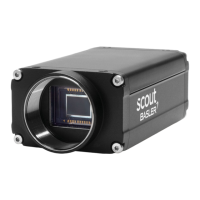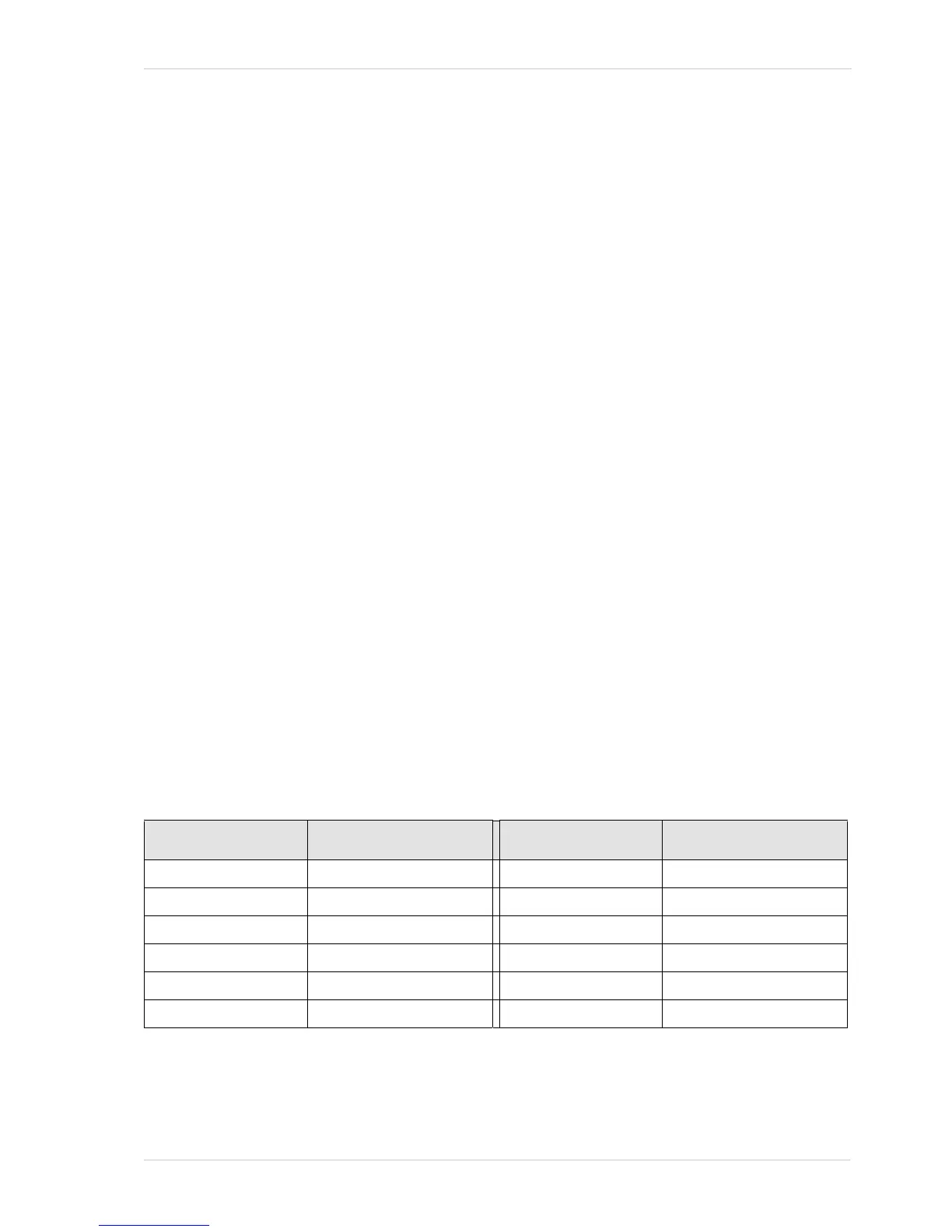AW00011916000 Image Acquisition Control
Basler scout GigE 165
9.12 Acquisition Timing Chart
Figure 67 shows a timing chart for image acquisition and transmission. The chart assumes that
exposure is triggered by an ExTrig signal with rising edge activation and that the camera is set for
the timed exposure mode.
The ExTrig signal will be an externally triggered frame start trigger signal when using image
acquisition control in standard mode. The ExTrig signal will be an externally triggered acquisition
start trigger signal when using image acquisition control in legacy mode.
As Figure 67 shows, there is a slight delay between the rise of the ExTrig signal and the start of
exposure. After the exposure time for an image acquisition is complete, the camera begins reading
out the acquired image data from the CCD sensor into a buffer in the camera. When the camera
has determined that a sufficient amount of image data has accumulated in the buffer, it will begin
transmitting the data from the camera to the host PC.
This buffering technique avoids the need to exactly synchronize the clock used for sensor readout
with the data transmission over your Ethernet network. The camera will begin transmitting data
when it has determined that it can safely do so without over-running or under-running the buffer.
This buffering technique is also an important element in achieving the highest possible frame rate
with the best image quality.
The exposure start delay is the amount of time between the point where the trigger signal
transitions and the point where exposure actually begins.
The frame readout time is the amount of time it takes to read out the data for an acquired image
from the CCD sensor into the image buffer.
The frame transmission time is the amount of time it takes to transmit the acquired image from
the buffer in the camera to the host PC via the network.
The transmission start delay is the amount of time between the point where the camera begins
reading out the acquired image data from the sensor to the point where it begins transmitting the
data for the acquired image from the buffer to the host PC.
The exposure start delay varies from camera model to camera model. The table below shows the
exposure start delay for each camera model:
Camera Model Exposure Start Delay Camera Model Exposure Start Delay
scA640-70gm/gc 33.80 µs scA1300-32gm/gc 34.14 µs
scA640-74gm/gc 30.05 µs scA1390-17gm/gc 65.31 µs
scA640-120gm/gc 19.34 µs scA1400-17gm/gc 63.17 µs
scA750-60 gm/gc 180.0 µs scA1400-30gm/gc 36.94 µs
scA780-54gm/gc 35.94 µs scA1600-14gm/gc 63.53 µs
scA1000-30gm/gc 47.23 µs scA1600-28gm/gc 32 µs
Table 13: Exposure Start Delays

